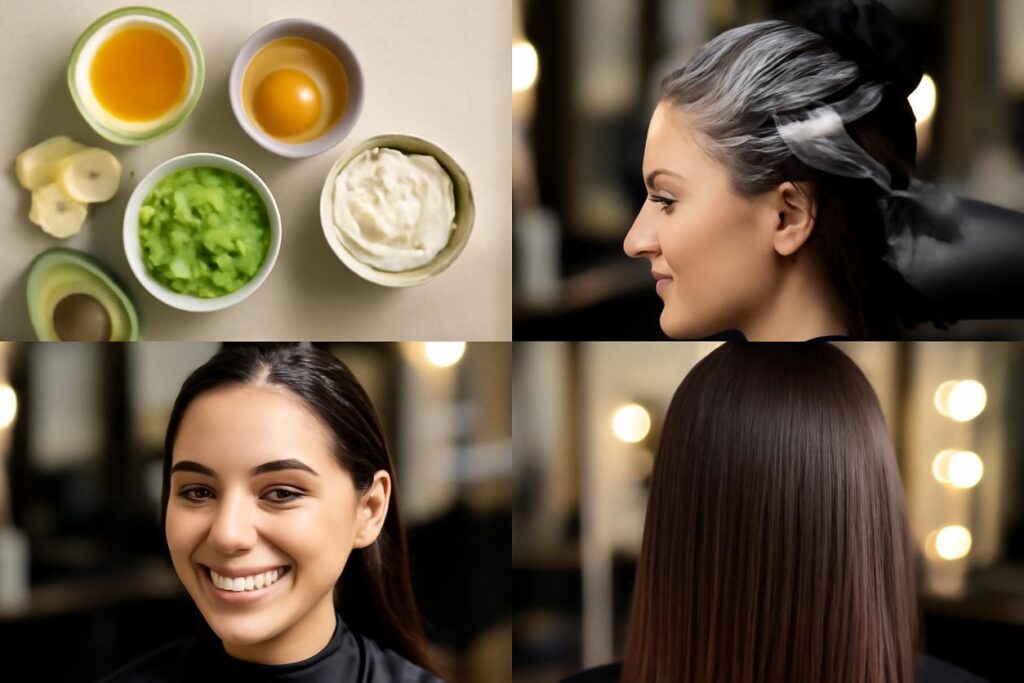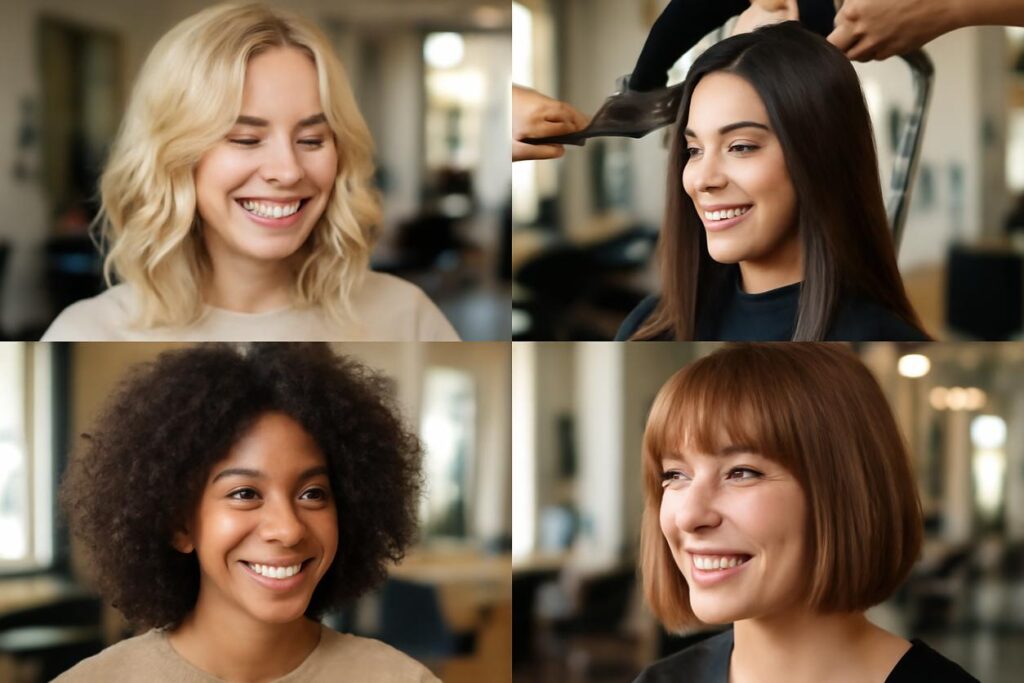The Ultimate Guide to Curly Hair Tips for 2025: A Holistic Approach to Healthy Curls
Table of Contents
- Introduction: Why Curls Need a Tailored Routine
- Understanding Your Curl Pattern and Porosity
- Choosing Shampoo and Conditioner for Your Curl Needs
- Daily Styling Techniques for Clumping and Lasting Definition
- Weekly Maintenance: Co-washing, Clarifying, and Deep Conditioning
- Nutrition and Hydration: Foods and Habits That Support Stronger Hair
- Nighttime Care: Protective Styles, Sleep Routines and Pillowcase Choices
- DIY Masks and Gentle Treatments Using Kitchen Ingredients
- Common Mistakes That Silently Damage Curls and How to Correct Them
- Troubleshooting Guide: Tame Frizz, Restore Limp Curls and Prevent Breakage
- When to Consult a Professional Stylist or Trichologist
- Actionable 4-Week Customizable Curl Care Plan and Summary
- Frequently Asked Questions and Quick Reference Tips
Introduction: Why Curls Need a Tailored Routine
Welcome to your ultimate guide for vibrant, healthy curls! If you have wavy, curly, or coily hair, you know it has a personality all its own. The beautiful bends and twists that create your unique texture also make it prone to dryness, frizz, and breakage. Unlike straight hair, the natural oils from your scalp have a harder time traveling down the hair shaft, meaning your ends often crave moisture. This is why a generic hair care routine just won’t cut it. Embracing your natural texture requires a specialized approach, and these curly hair tips are designed to give you just that. This guide for 2025 and beyond moves past temporary fixes, focusing on a holistic strategy that combines daily care, nutrition, and lifestyle habits for long-term hair health and stunning definition.
Understanding Your Curl Pattern and Porosity
The first step to unlocking your hair’s potential is understanding its unique characteristics. Knowing your curl pattern and porosity is foundational to every other choice you make, from products to styling techniques.
What is Your Curl Pattern?
Curl patterns are generally categorized by a numbering and lettering system. While many people have multiple patterns on their head, identifying your dominant type helps you find relatable advice and techniques.
- Type 2 (Wavy): This hair has an ‘S’ shape. 2A is a fine, gentle tousle; 2B has more defined waves from the mid-lengths; and 2C has distinct waves from the root, sometimes with a few spiral curls.
- Type 3 (Curly): These curls are more defined spirals. 3A curls are large, loose spirals; 3B curls are springy and about the size of a marker; and 3C curls are tight, corkscrew-like strands.
- Type 4 (Coily/Kinky): This hair type features tight coils. 4A has dense, S-patterned coils; 4B has a ‘Z’ pattern with sharp angles; and 4C has the tightest coils with less definition and significant shrinkage.
Why Hair Porosity is a Game-Changer
Hair porosity refers to your hair’s ability to absorb and retain moisture. It’s often more important than your curl pattern when it comes to product selection. You can perform a simple test: spray a small section of clean, dry hair with water. If the water beads up, you likely have low porosity hair. If it absorbs quickly, you have high porosity hair. If it sits for a minute before absorbing, you have medium porosity hair.
- Low Porosity: The hair cuticle is tightly packed. Hair is resistant to moisture but retains it well once absorbed. It is often prone to product buildup.
- Medium Porosity: The cuticle is looser, allowing for steady absorption and retention of moisture. This is often considered the “ideal” porosity.
- High Porosity: The cuticle has gaps, so it absorbs moisture easily but loses it just as fast. This hair type is often prone to frizz and dryness.
Choosing Shampoo and Conditioner for Your Curl Needs
With an understanding of your hair, you can now select products that work for you, not against you. The key for curly hair is almost always moisture and gentle cleansing.
The Case for Sulfate-Free Shampoos
Sulfates are detergents that create a rich lather, but they can be incredibly harsh. They strip the hair of its natural oils, which is particularly damaging for curls that are already prone to dryness. Look for cleansers labeled “sulfate-free.” These will clean your scalp and hair effectively without causing excessive dryness or frizz. Don’t be alarmed by the lack of foam; it’s still working!
Finding a Conditioner with Great “Slip”
Conditioner is a curly person’s best friend. It not only replenishes moisture but also helps with detangling. Look for a conditioner with good “slip”—a silky feeling that allows your fingers or a wide-tooth comb to glide through knots and tangles easily. Many people with curls also prefer silicone-free conditioners, as certain silicones can build up over time and weigh hair down.
Daily Styling Techniques for Clumping and Lasting Definition
How you apply products is just as important as the products themselves. The goal is to encourage your curls to form defined, frizz-free clumps.
Apply Products to Soaking Wet Hair
For best results, apply your leave-in conditioner, curl cream, and gel while your hair is still soaking wet—ideally, right in the shower. This helps lock in maximum moisture and distributes the product evenly. Rake the products through your hair first, then try one of these techniques:
- Praying Hands: Rub the product between your palms and smooth it down sections of your hair, with the hair held between your two flat palms.
- Scrunching: Gently cup and squeeze sections of your hair towards the scalp. This encourages curl formation and bounce. You should hear a “squishing” sound, which indicates your hair is well-moisturized.
Drying Your Curls Gently
A standard terry cloth towel can disrupt your curl pattern and cause major frizz. Instead, opt for a gentler drying method.
- Plopping: After applying products, lay a cotton T-shirt or a microfiber towel on a flat surface. Flip your hair forward onto the fabric, then wrap it up. This method absorbs excess water without gravity pulling your curls down. Leave it on for 10-20 minutes before air-drying or diffusing.
- Diffusing: A diffuser attachment on your blow dryer disperses the airflow to gently dry your curls, enhancing volume and definition. Use low speed and low-to-medium heat to prevent damage.
Weekly Maintenance: Co-washing, Clarifying, and Deep Conditioning
A consistent weekly routine is one of the most effective curly hair tips for maintaining health and vibrancy.
What is Co-washing?
Co-washing means washing your hair only with conditioner. This is a great option for those with extremely dry or coarse hair, as it cleanses gently without stripping natural oils. You might choose to co-wash mid-week and use a sulfate-free shampoo on your main wash day.
The Importance of Clarifying
Even if you use silicone-free products, buildup from oils, butters, and environmental factors can occur. A clarifying shampoo acts as a reset button, deep cleaning your hair and scalp. Depending on your hair’s needs and how many styling products you use, clarifying once a month is a good starting point to restore bounce and shine.
Never Skip Deep Conditioning
A weekly deep conditioner or hair mask is non-negotiable for curly hair. This intensive treatment infuses your hair with moisture and nutrients. Look for masks that balance moisture (containing ingredients like glycerin, aloe vera) and protein (like keratin, amino acids) to keep your hair strong and elastic.
Nutrition and Hydration: Foods and Habits That Support Stronger Hair
Truly healthy hair starts from within. What you eat and drink directly impacts the strength and growth of your hair strands.
Key Nutrients for Healthy Hair
A balanced diet is crucial. According to health resources like the NHS guidance on healthy eating, certain nutrients are vital for hair health. Focus on incorporating these into your meals:
- Protein: Hair is primarily made of protein, so ensure you get enough from sources like lean meats, fish, eggs, beans, and lentils.
- Iron: Iron deficiency can be linked to hair loss. Find it in red meat, spinach, and fortified cereals.
- Omega-3 Fatty Acids: These healthy fats, found in salmon, avocados, and walnuts, support a healthy scalp.
- Biotin and B Vitamins: Whole grains, eggs, and almonds are excellent sources of biotin, which contributes to hair strength.
The Role of Hydration
Dehydration can impact your entire body, including your hair. When you’re dehydrated, your body prioritizes vital organs, and hair growth is not a priority. Drinking plenty of water throughout the day ensures your scalp and hair follicles stay hydrated from the inside out.
Nighttime Care: Protective Styles, Sleep Routines and Pillowcase Choices
How you sleep can make or break your curls. A good nighttime routine protects your hair from friction and tangles, preserving your style for the next day.
Protective Styles for Sleep
Tossing and turning can lead to knots and frizz. Tying your hair up loosely helps protect it.
- The “Pineapple”: Gather all your hair into a very high, loose ponytail on top of your head. This protects your curls from being crushed while you sleep.
- Loose Braids or Twists: For longer or thicker hair, one or two loose braids can prevent tangling without stretching your curl pattern too much.
Upgrade Your Pillowcase
Cotton pillowcases absorb moisture from your hair and create friction, leading to breakage and frizz. Switching to a silk or satin pillowcase is a simple yet transformative change. The smooth surface allows your hair to glide across it, reducing friction. A silk or satin bonnet or scarf offers similar protection.
DIY Masks and Gentle Treatments Using Kitchen Ingredients
You don’t always need to buy expensive treatments. Your kitchen holds powerful ingredients for a nourishing hair mask.
DIY Moisturizing Mask
For a dose of hydration, mash half an avocado and mix it with a tablespoon of olive oil. Apply to your hair, leave it on for 20-30 minutes, and then rinse thoroughly before cleansing.
DIY Strengthening Mask
For a protein boost, mix half a cup of plain yogurt with a tablespoon of honey. The lactic acid in yogurt gently cleanses while the protein strengthens. Apply to hair for 20 minutes before your wash routine.
Common Mistakes That Silently Damage Curls and How to Correct Them
Sometimes, what you *don’t* do is as important as what you do. Here are some common curly hair mistakes to avoid.
- Dry Brushing: Never, ever brush your curly hair when it’s dry. This will break up your curl clumps, cause immense frizz, and lead to breakage. Only detangle with a wide-tooth comb or your fingers when your hair is saturated with conditioner.
- Using Harsh Towels: As mentioned, regular terry cloth towels are too rough. Stick to a microfiber towel or an old cotton T-shirt.
- Over-Cleansing: Washing your hair too often can strip it of necessary oils. Most curlies find that washing 2-3 times a week is plenty.
- Applying Too Much Heat: Excessive use of flat irons or curling wands can cause irreversible heat damage. If you must use heat, always apply a heat protectant spray first.
Troubleshooting Guide: Tame Frizz, Restore Limp Curls and Prevent Breakage
Even with a great routine, you might face some challenges. Here’s how to troubleshoot them.
Taming Unruly Frizz
Frizz is essentially a cry for moisture. If you’re experiencing a lot of frizz, your hair is likely dehydrated. Ensure you are deep conditioning weekly and sealing your hair’s moisture with a gel or a light oil after applying your leave-in products.
Restoring Limp, Lifeless Curls
If your curls suddenly seem stretched out or won’t hold their shape, you could be dealing with either product buildup or moisture overload. First, try a clarifying shampoo to remove any residue. If that doesn’t work, your hair may need a protein treatment to restore its structure.
Preventing Breakage
Breakage is often a sign of dry, weak hair. The solution is a combination of gentle handling (detangling carefully, protective styling) and ensuring a good moisture-protein balance in your routine. For more general advice on preventing hair damage, the American Academy of Dermatology provides excellent hair care guidance.
When to Consult a Professional Stylist or Trichologist
While these curly hair tips can solve many issues, sometimes you need an expert. Seek a stylist who specializes in cutting curly hair for a shape that enhances your natural texture. If you experience sudden, excessive hair loss, persistent scalp irritation, or significant changes in your hair’s health, it may be time to consult a trichologist—a specialist in hair and scalp health. A clinic like Rich Hair UK can offer expert diagnosis and treatment plans for more serious concerns.
Actionable 4-Week Customizable Curl Care Plan and Summary
Ready to put these tips into practice? Here is a simple, customizable plan to get you started on your journey to healthier curls in just four weeks.
| Week | Focus | Action Steps |
|---|---|---|
| Week 1 | Foundation |
|
| Week 2 | Technique |
|
| Week 3 | Treatment |
|
| Week 4 | Holistic Care |
|
Summary: The secret to amazing curls isn’t a single magic product; it’s a consistent, holistic routine that nurtures your hair from the inside out. By understanding your hair’s unique needs and treating it with gentle care, you can achieve the defined, healthy, and beautiful curls you’ve always wanted.
Frequently Asked Questions and Quick Reference Tips
Frequently Asked Questions
How often should I wash my curly hair?
This depends on your hair type and lifestyle, but most people with curly hair find washing every 2-4 days is sufficient. Coily and kinky hair types may go even longer. Listen to your hair and scalp—if it feels dirty or weighed down, it’s time to wash.
Can I get my curls back after heat or chemical damage?
Unfortunately, severe damage is irreversible. You cannot “repair” a damaged hair strand back to its original state. However, you can improve its appearance with protein treatments and deep conditioners while you grow out the damage. The best solution is a haircut to remove the damaged ends and start fresh.
Why are the curls on different parts of my head different textures?
This is completely normal! It is very common to have a mix of curl patterns on one head. The hair around your crown and nape is often a different texture than the rest. A skilled stylist can give you a cut that helps blend these different patterns beautifully.
Quick Reference Tips
- Always detangle gently on wet, conditioned hair from the ends up.
- Sleep on a silk or satin surface to reduce friction and frizz.
- Deep condition weekly without fail.
- Clarify monthly to remove buildup.
- Water is your best friend—both in your glass and on your hair during styling.
- Embrace consistency; results won’t happen overnight, but they will happen.






